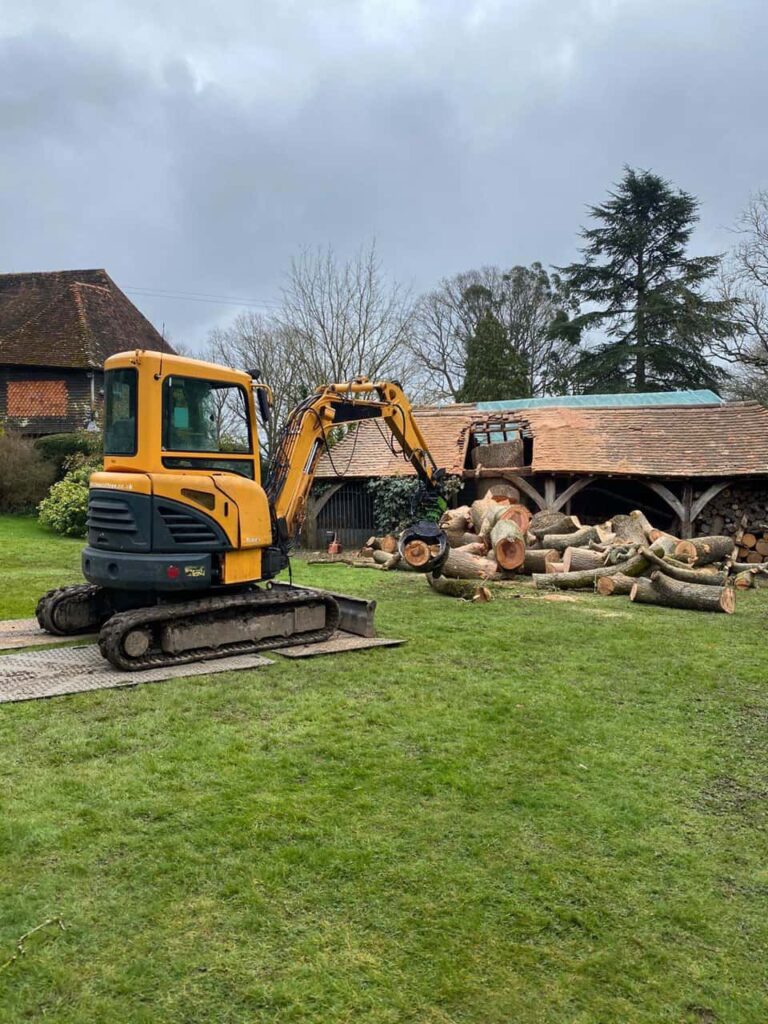Introduction: Storms, with their strong winds and heavy rains, can wreak havoc on trees and pose significant risks to your property. Proper tree pruning is one proactive and effective way to minimise storm damage. In this blog post, presented by Ely Tree Surgeons, we’ll explore the importance of pruning for storm preparedness and how it can help protect your property during extreme weather events.
1. Reduce Wind Resistance
One of the primary objectives of storm preparedness pruning is to reduce a tree’s wind resistance. Trees with dense canopies or overgrown branches can act like sails, catching the wind and making them more susceptible to toppling during storms. By selectively thinning and pruning branches, you can help the tree maintain better balance and reduce the risk of being uprooted or damaged by strong winds.
2. Remove Dead or Weak Branches
Dead or weakened branches are a significant risk during storms. They can break off and become projectiles, causing damage to your property or posing a danger to people nearby. Regular pruning to remove dead, diseased, or weak branches minimises the potential for these branches to cause harm during storms.
3. Improve Canopy Structure
Pruning can improve the overall structure of a tree’s canopy. Trees with multiple trunks or branches with weak attachments are likelier to split apart during storms. Proper pruning techniques, such as crown thinning and canopy shaping, can strengthen the tree’s structure and reduce the risk of breakage.
4. Raise the Canopy and Remove Overhanging Limbs
Lower branches and overhanging limbs can threaten your property, especially during storms. These branches can contact buildings, power lines, or vehicles, leading to damage or power outages. Pruning to raise the canopy and remove overhanging limbs creates a safer environment and reduces the risk of property damage.
5. Weight Reduction
Some tree species or branches may accumulate excess weight from dense foliage or water retention. This added weight can make a tree more susceptible to falling during storms. Professional tree surgeons can assess and selectively remove branches or foliage to reduce the tree’s weight, making it less prone to storm damage.
6. Inspection and Maintenance
Regular inspection and maintenance of your trees are essential for storm preparedness. A trained arborist can identify potential issues, such as root damage, disease, or pest infestations, that may weaken a tree’s stability and make it vulnerable to storm damage.
Conclusion: Pruning for storm preparedness is a proactive and responsible way to protect your property and ensure the safety of your surroundings during extreme weather events. While you can perform some pruning tasks yourself, it’s advisable to consult with professionals like Ely Tree Surgeons for more complex or larger trees. Their expertise and experience will help you create a safer environment and reduce the risk of property damage. Investing in tree pruning for storm preparedness is an investment in your property’s long-term well-being and safety.
Call us on: 01353 880 893
Click here to find out more about Ely Tree Surgeons
Click here to complete our contact form and see how we can help with your tree’s needs.

